|
|
Berkeley CA (SPX) Jul 05, 2011 Observation of a scientific rule being broken can sometimes lead to new knowledge and important applications. Such would seem to be the case when scientists with the U.S. Department of Energy (DOE)'s Lawrence Berkeley National Laboratory (Berkeley Lab) created artificial molecules of semiconductor nanocrystals and watched them break a fundamental principle of photoluminescence known as "Kasha's rule." Named for chemist Michael Kasha, who proposed it in 1950, Kasha's rule holds that when light is s ... read more |
. |
|
| Buy Advertising | Media Advertising Kit | Editorial & Other Enquiries | Privacy statement |
|
Free Newsletters - Delivered Daily Via Email - Space - War - Terra - Energy |
| .. |
 Tiny ring laser accurately detects and counts nanoparticles A tiny doughnut-shaped laser is the latest marvel of silicon microminiaturization, but instead of manipulating bits it detects very small particles. Small particles play a big - and largely unnotice ... more | .. |
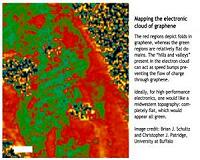 Researchers image graphene electron clouds, revealing how folds can harm conductivity A research team led by University at Buffalo chemists has used synchrotron light sources to observe the electron clouds on the surface of graphene, producing a series of images that reveal how folds ... more | .. |
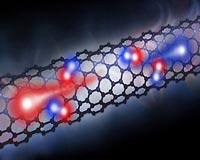 Moving microscopic vision into another new dimension Scientists who pioneered a revolutionary 3-D microscope technique are now describing an extension of that technology into a new dimension that promises sweeping applications in medicine, biological ... more | .. |
Amazon takes on iPad with new Kindle Fire tablet Hong Kong to restrict foreign homebuyers from 2013 US judge OKs partial settlement in e-book case Nordic-Baltic states seek more cooperation Outside View: Jobs outlook grim Empire-style computers? Frenchman takes PCs to lap of luxury Google-Microsoft field smartphones to take on iPhone 5 EU businesses urge China's new leaders to speed reforms |
|
| .. |
 Scientists shed light on the private lives of electrons A Princeton researcher and his international collaborators have used lasers to peek into the complex relationship between a single electron and its environment, a breakthrough that could aid the dev ... more | .. |
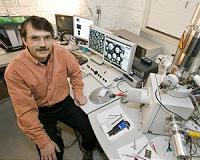 Splitsville for Boron Nitride Nanotubes For Hollywood celebrities, the term "splitsville" usually means "check your prenup." For scientists wanting to mass-produce high quality nanoribbons from boron nitride nanotubes, "splitsville" could ... more | .. |
Nanowire-based sensors offer improved detection of volatile organic compounds A team of researchers from the National Institute of Standards and Technology (NIST), George Mason University and the University of Maryland has made nano-sized sensors that detect volatile organic ... more | .. |
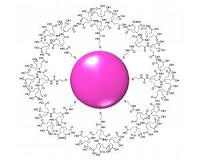 Branch offices: New family of gold-based nanoparticles could serve as biomedical 'testbed' Gold nanoparticles are becoming the ... well ... gold standard for medical-use nanoparticles. A new paper* by researchers from the National Institute of Standards and Technology (NIST) and the Natio ... more |
|
Free Newsletters - Delivered Daily Via Email - Space - War - Terra - Energy |
| . | . |
 OPERA satellite data sharpens US crop and water management
OPERA satellite data sharpens US crop and water management Alen Space begins SATMAR satellite validation over Bay of Algeciras
Alen Space begins SATMAR satellite validation over Bay of Algeciras Deep Arctic gas hydrate mounds host ultra deep cold seep ecosystem
Deep Arctic gas hydrate mounds host ultra deep cold seep ecosystem | .. |
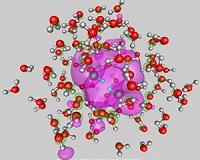 Scientists discover dielectron charging of water nano-droplet Scientists have discovered fundamental steps of charging of nano-sized water droplets and unveiled the long-sought-after mechanism of hydrogen emission from irradiated water. Working together at the ... more | .. |
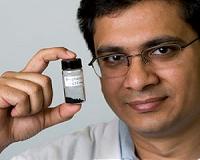 Simple, green and cost-effective way to produce high yields of graphene Scientists at Northern Illinois University say they have discovered a simple method for producing high yields of graphene, a highly touted carbon nanostructure that some believe could replace silico ... more | .. |
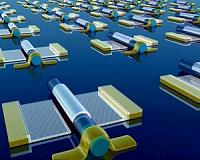 UCLA team reports scalable fabrication of self-aligned graphene transistors, circuits Graphene, a one-atom-thick layer of graphitic carbon, has the potential to make consumer electronic devices faster and smaller. But its unique properties, and the shrinking scale of electronics, als ... more | .. |
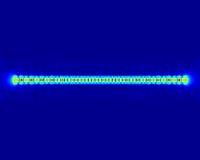 Researchers Break Light-Matter Coupling Strength Limit in Nanoscale Semiconductors New engineering research at the University of Pennsylvania demonstrates that polaritons have increased coupling strength when confined to nanoscale semiconductors. This represents a promising advanc ... more |
| .. |
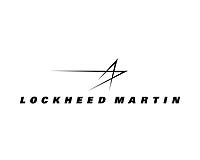 Lockheed Martin Space Systems to Eliminate Approximately 1,200 Positions Lockheed Martin Space Systems Company, a major business area of the Lockheed Martin has announced employment reductions designed to address affordability and improve its competitive posture. S ... more | .. |
 SDO Detects Superfast Solar Waves Moving At 2,000 Km Per Second Scientists using the Atmospheric Imaging Assembly (AIA) instrument on board NASA's Solar Dynamics Observatory (SDO), have detected quasi-periodic waves in the low solar corona that travel at speeds ... more | .. |
 Research examines how to apply conductive nanocoatings to textiles Imagine plugging a USB port into a sheet of paper, and turning it into a tablet computer. It might be a stretch, but ideas like this have researchers at North Carolina State University examining the ... more | .. |
 Research creates nanoparticles perfectly formed to tackle cancer Researchers from the University of Hull have discovered a way to load up nanoparticles with large numbers of light-sensitive molecules to create a more effective form of photodynamic therapy (PDT) f ... more |
| Buy Advertising | Media Advertising Kit | Editorial & Other Enquiries | Privacy statement |
|
Free Newsletters - Delivered Daily Via Email - Space - War - Terra - Energy |
 AI systems proposed to boost launch cadence reliability and traffic management
AI systems proposed to boost launch cadence reliability and traffic management China debuts Long March 12A reusable rocket in Jiuquan test flight
China debuts Long March 12A reusable rocket in Jiuquan test flight How to Refinance a Personal Loan is it the Right Choice for You
How to Refinance a Personal Loan is it the Right Choice for You | .. |
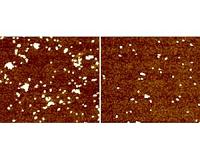 NIST 'catch and release' program could improve nanoparticle safety assessment Depending on whom you ask, nanoparticles are, potentially, either one of the most promising or the most perilous creations of science. These tiny objects can deliver drugs efficiently and enhance th ... more | .. |
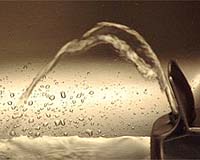 From seawater to freshwater with a nanotechnology filter In this month's Physics World, Jason Reese, Weir Professor of Thermodynamics and Fluid Mechanics at the University of Strathclyde, describes the role that carbon nanotubes (CNTs) could play in the d ... more | .. |
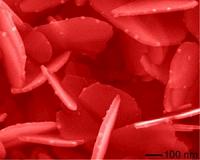 Safety of nanoparticles in food crops is still unclear With the curtain about to rise on a much-anticipated new era of "nanoagriculture" - using nanotechnology to boost the productivity of plants for food, fuel, and other uses -scientists are reporting ... more | .. |
 World's largest biochemical circuit built out of synthetic DNA molecules In many ways, life is like a computer. An organism's genome is the software that tells the cellular and molecular machinery-the hardware-what to do. But instead of electronic circuitry, life relies ... more |
| .. |
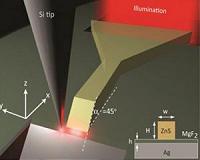 Nanoscale waveguide for future photonics The creation of a new quasiparticle called the "hybrid plasmon polariton" may throw open the doors to integrated photonic circuits and optical computing for the 21st century. Researchers with the U. ... more | .. |
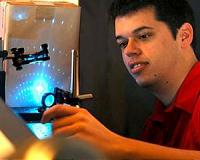 Stamping out low cost nanodevices A simple technique for stamping patterns invisible to the human eye onto a special class of nanomaterials provides a new, cost-effective way to produce novel devices in areas ranging from drug deliv ... more | .. |
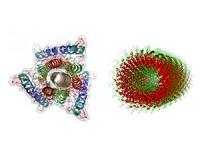 Penn Researchers Help Nanoscale Engineers Choose Self-Assembling Proteins Engineering structures on the smallest possible scales - using molecules and individual atoms as building blocks - is both physically and conceptually challenging. An interdisciplinary team of resea ... more | .. |
 Canada, Russia reinforce aerospace, economic ties Canada and Russia agreed Thursday to strengthen their economic ties and increase cooperation in both aerospace and scientific research in the Artic, the home of vast hydrocarbon reserves. ... more |
| Buy Advertising | Media Advertising Kit | Editorial & Other Enquiries | Privacy statement |
|
Free Newsletters - Delivered Daily Via Email - Space - War - Terra - Energy |
 SDA expands Tracking Layer satellite awards and related missile defense contracts
SDA expands Tracking Layer satellite awards and related missile defense contracts Space Systems Command activates System Delta 80 for assured space access
Space Systems Command activates System Delta 80 for assured space access Rheinmetall ICEYE Space Solutions to provide SAR reconnaissance data to German military
Rheinmetall ICEYE Space Solutions to provide SAR reconnaissance data to German military | .. |
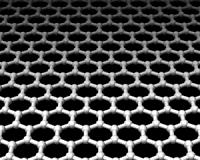 Defect in graphene may present bouquet of possibilities A class of decorative, flower-like defects in the nanomaterial graphene could have potentially important effects on the material's already unique electrical and mechanical properties, according to r ... more | .. |
 Nanowire measurements could improve computer memory A recent study* at the National Institute of Standards and Technology (NIST) may have revealed the optimal characteristics for a new type of computer memory now under development. The work, pe ... more | .. |
 New nanoscale imaging may lead to new treatments for multiple sclerosis Laboratory studies by chemical engineers at UC Santa Barbara may lead to new experimental methods for early detection and diagnosis - and to possible treatments - for pathological tissues that are p ... more | .. |
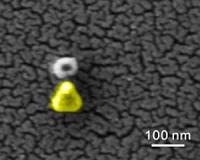 Researchers Use Nanoantenna to Enhance Plasmonic Sensing Such highly coveted technical capabilities as the observation of single catalytic processes in nanoreactors, or the optical detection of low concentrations of biochemical agents and gases are an imp ... more |
| .. |
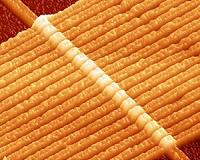 'Computer synapse' analyzed at the nanoscale Researchers at Hewlett Packard and the University of California, Santa Barbara, have analysed in unprecedented detail the physical and chemical properties of an electronic device that computer engin ... more | .. |
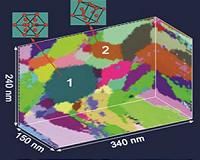 Looking inside nanomaterials in three dimensions The journal Science has published a paper where scientists from Riso DTU in collaboration with scientists from China and USA, have reported a new method for revealing a 3D picture of the structure i ... more | .. |
 Exotic behavior when mechanical devices reach the nanoscale Most mechanical resonators damp (slow down) in a well-understood linear manner, but ground-breaking work by Prof. Adrian Bachtold and his research group at the Catalan Institute of Nanotechnology ha ... more | .. |
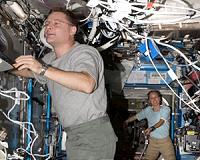 Utah USTAR Professor's Invention Approved by NASA for Long-Term Use Aboard ISS After more than 12 months of testing aboard the International Space Station (ISS), an experimental water quality monitoring kit based on technology developed by USTAR professor Marc D. Porter and Un ... more |
| Previous Issues | Jul 06 | Jul 05 | Jul 04 | Jul 01 | Jun 30 |
| The contents herein, unless otherwise known to be public domain, are Copyright 1995-2011 - SpaceDaily. AFP and UPI Wire Stories are copyright Agence France-Presse and United Press International. ESA Portal Reports are copyright European Space Agency. All NASA sourced material is public domain. Additional copyrights may apply in whole or part to other bona fide parties. Advertising does not imply endorsement, agreement or approval of any opinions, statements or information provided by SpaceDaily on any web page published or hosted by SpaceDaily. Privacy statement |
|
Free Newsletters - Delivered Daily Via Email - Space - War - Terra - Energy |
| Buy Advertising | Media Advertising Kit | Editorial & Other Enquiries | Privacy statement |